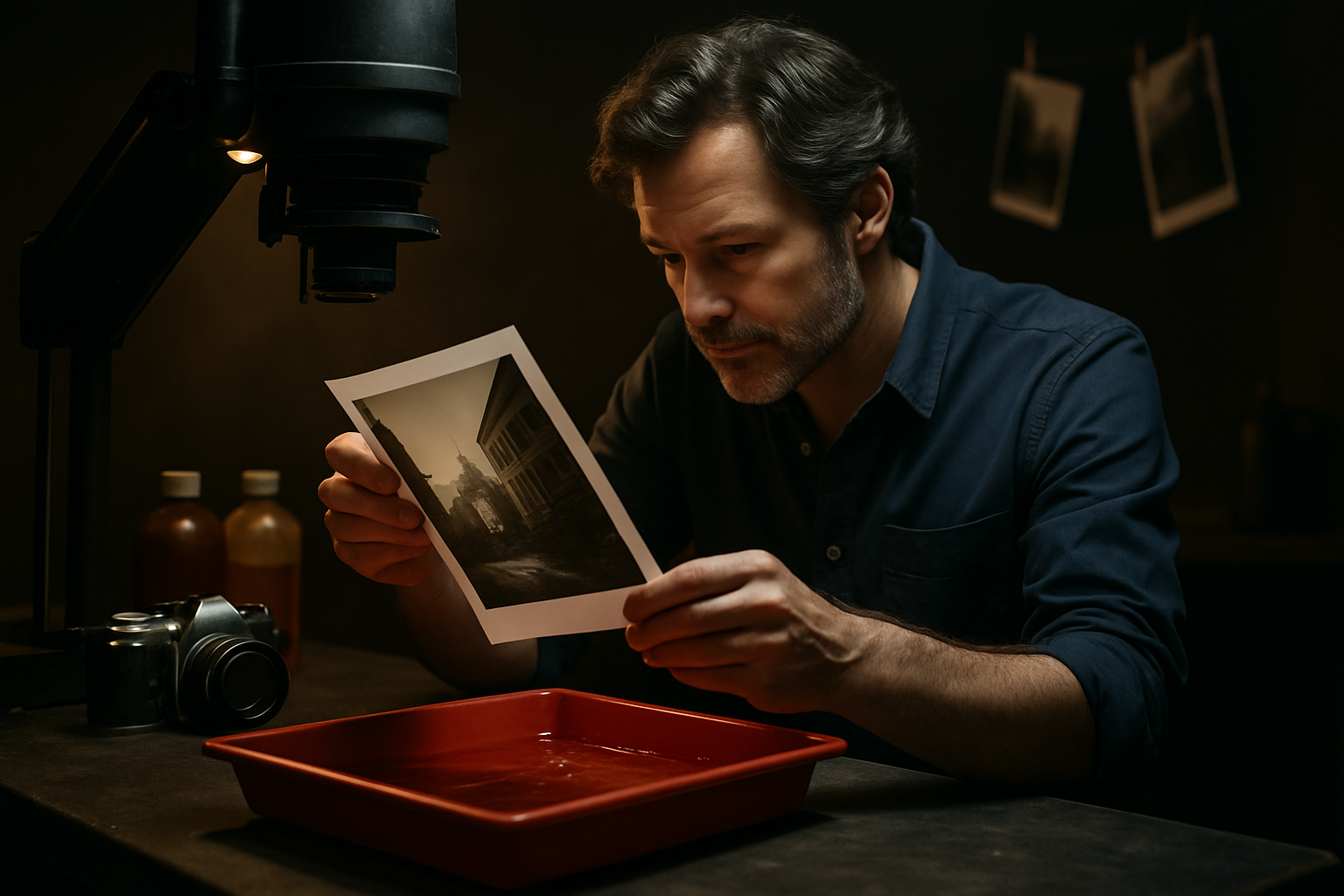The Resurgence of Analog Photography in the Digital Age
In an era dominated by smartphones and instant digital gratification, a surprising trend has emerged within the art world. Analog photography, once thought to be obsolete, is experiencing a remarkable revival. This unexpected resurgence has captivated both seasoned professionals and young enthusiasts, breathing new life into a medium that many believed had seen its final days. As we delve into this phenomenon, we'll explore the factors driving this renaissance, the artists at its forefront, and the impact it's having on the broader landscape of contemporary visual arts.

The Roots of Revival
The resurgence of analog photography can be traced back to the early 2010s, coinciding with the rise of Instagram and the ubiquity of smartphone cameras. As digital imaging became commonplace, a counterculture began to form, seeking a more tactile and deliberate approach to photography. This movement was initially fueled by artists and hobbyists who yearned for the unpredictability and character of film.
Key figures in the photography world, such as Alec Soth and Stephen Shore, maintained their use of analog methods throughout the digital revolution, influencing a new generation of photographers. The allure of vintage cameras, the chemical processes involved in development, and the unique qualities of film stocks all contributed to a growing fascination with analog techniques.
The Aesthetic Appeal
One of the primary drivers behind the analog renaissance is the distinctive aesthetic it offers. Film photography produces images with a depth, grain, and color palette that many find difficult to replicate digitally. The imperfections and unpredictability of analog processes often result in photographs with a rawness and authenticity that resonates with contemporary audiences.
This aesthetic has found particular favor in fashion and fine art photography, where the softness and texture of film complement the subjects in ways that crisp digital images sometimes fail to capture. Photographers like Petra Collins and Harley Weir have built successful careers largely on the strength of their analog work, influencing visual trends across multiple industries.
Technical Challenges and Creative Solutions
The revival of analog photography has not been without its challenges. As major manufacturers discontinued film stocks and processing equipment, enthusiasts faced dwindling resources. However, this scarcity has sparked innovation and community-driven solutions.
Small-scale film producers like FILM Ferrania and Cinestill have emerged, creating new stocks and reviving classic formulations. DIY developers and printers have shared knowledge online, fostering a vibrant community of analog practitioners. These grassroots efforts have not only sustained the medium but have also led to exciting new developments in film technology and processing techniques.
Educational Renaissance
The analog revival has had a significant impact on photographic education. Many art schools and universities have reintroduced or expanded their film photography programs in response to growing student interest. These courses often emphasize the fundamentals of exposure, composition, and darkroom techniques, skills that translate to digital photography as well.
Workshops and community darkrooms have sprung up in cities around the world, offering hands-on experience to those curious about analog methods. This educational resurgence has created a new generation of photographers with a deep appreciation for the craft’s history and technical foundations.
Cultural Impact and Sustainability
As the analog movement grows, it raises important questions about sustainability and the environmental impact of photographic practices. While digital photography has its own ecological concerns, the chemical processes involved in film development and printing present unique challenges.
In response, many analog enthusiasts have embraced eco-friendly development methods and recycling programs for used film canisters and chemicals. This focus on sustainability has become an integral part of the analog revival, encouraging practitioners to consider the full lifecycle of their artistic process.
The Future of Analog in a Digital World
As we look to the future, it’s clear that analog photography has secured its place in the contemporary art world. Rather than competing with digital technologies, it has found a complementary role, offering a distinct approach to image-making that continues to inspire and challenge photographers.
The analog revival has also influenced digital photography, with many software developers creating filters and presets that emulate the look of film. This cross-pollination between analog and digital techniques suggests a future where both mediums coexist and inform each other, enriching the photographic landscape as a whole.
In conclusion, the resurgence of analog photography represents more than just a trend; it’s a reimagining of an art form for the modern era. By embracing the limitations and unique qualities of film, photographers are discovering new ways to express themselves and connect with their audience. As this revival continues to evolve, it promises to shape the future of photography in profound and unexpected ways, ensuring that the magic of analog remains a vital part of our visual culture for years to come.





